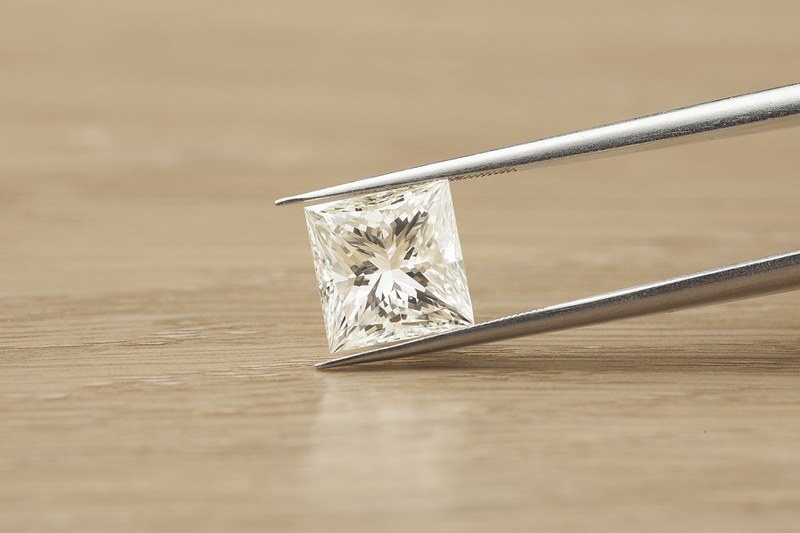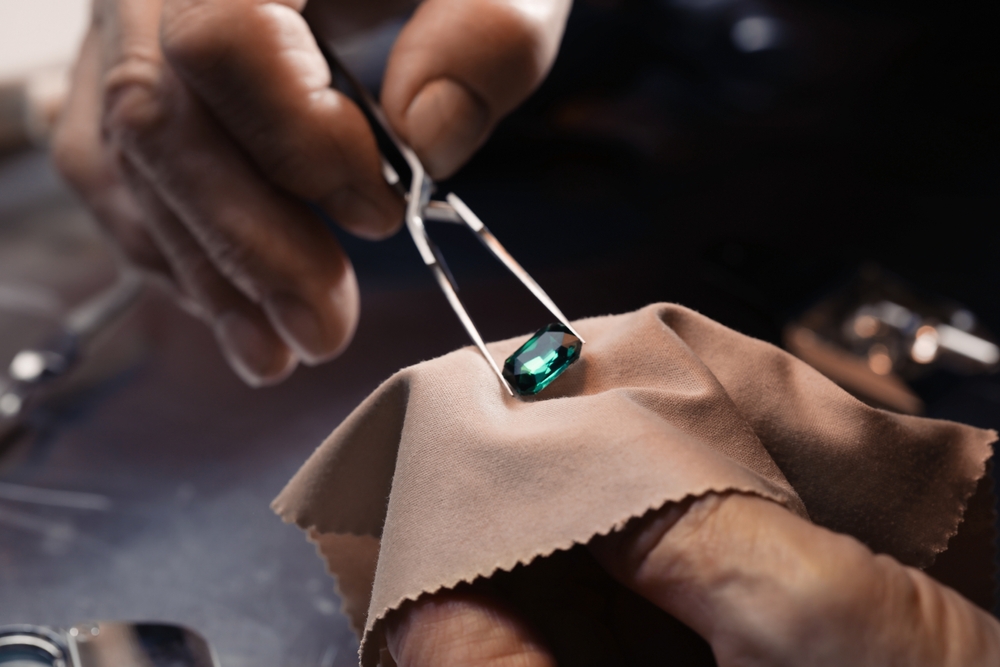Have you ever wondered why there are so many different diamond engagement rings, but most are set with diamonds? Our customers often ask us whether they can get a specific gemstone set in their engagement ring. There’s nothing stopping you from using an emerald or an amethyst. However, they are not the most recommended gemstones by jewelers for us in an engagement ring.
If you’ve looked for an answer to this question you’ve likely come across something called the Mohs Scale of Hardness. And among the many specs and diagrams, you may have missed how this scale impacts which gemstones are the most suitable for an engagement ring. Fortunately, our experts are here to provide an answer as to why you’ll see mostly sapphire, ruby, or diamond engagement rings, while others like amethyst and aquamarine are less often used for that purpose.
What is the Mohs Scale?
Gemstones exhibit different degrees of “hardness” that range from the more fragile ones like pearls to the harder ones like diamonds. To compare the level of hardness, jewelers refer to the Mohs Scale of Hardness. The scale was first conceived by a German geologist named Friedrich Mohs back in 1812. He referred to it as the “scratchability scale.” The more resistant a gem is to being scratched, the higher its number on the list.
The highest-ranking gemstone on the list is diamond, ranking at number 10. This means that nothing can scratch it – except another diamond. On the other hand, the lowest entry on the list is talc. As you might have guessed, any other mineral on the list is able to scratch it. Similarly, a topaz ranking at a number 8 can scratch a quartz ranked number 7, but not vice versa.
Now, pay close attention to this part. The Mohs scale is an ordinal one, which means that even though the gemstones are linearly listed according to their hardness, the differences between these levels vary widely. For example, the list-topping diamond at number 10 is four times harder than corundum (rubies, sapphires) ranking at number 9. However, corundum is only two times harder than topaz that is ranked number 8. It’s generally recommended that gemstones used in rings that will be worn daily are at least a 7 on the Mohs scale since our hands are more likely to suffer impacts as we go through our busy days.


Hardness vs. Toughness & Stability
The hardness is only one of the factors that jewelers consider when recommending the gemstone for your unique engagement ring. Every gemstone has different properties and varying tolerances to environmental factors. When choosing which gemstone to use in engagement rings, experts look at three factors: hardness, toughness, and durability. We’ve already covered what hardness means for gemstones used in rings, so let’s talk a bit about toughness.
Toughness is determined by the strength of the atomic bonds of a particular gemstone and the way these bonds are formed. The toughness scale measures how much work is required to separate two surfaces along a specific crystallographic plane. This means that there are certain angles along which the uber-hard diamond is more vulnerable to breaking, and a solid blow along these angles can fracture it.
That’s why diamonds with thin girdles or exposed culets may be vulnerable to chipping or breaking. Therefore, diamond is not rated as the toughest gemstone; actually, jadeite jade is by far the toughest gemstone, extremely difficult to crack or break. Finally, gem stability determines how resistant the mineral is to outside factors such as temperature, chemicals, light, and humidity. So again, even though diamonds top the Mohs scale, they can be vulnerable to sudden or extreme temperature changes.
Gems like iolite, opal, or kunzite are also vulnerable to this “thermal shock,” as jewelers refer to it. Other gemstones are prone to damage due to different levels of humidity. While opals can crack due to low humidity, other gemstones like azurite can be damaged if exposed to water. Similarly, some gems like amethyst or topaz can lose color if exposed to intense light for long periods of time. Finally, some common chemicals can damage other gems: pearls can get damaged if exposed to something as mild as perfume.
How Do You Pick the Perfect Ring?
Knowing all these facts you now realize why it’s recommended to choose a durable gemstone for your engagement ring. It’s generally suggested that gemstones used in rings that will be worn daily are at least a 7 on the Mohs scale, since our hands are more likely to suffer impacts as we go through our busy days. And the higher on the scale, the better the gemstone will hold up over time. Therefore, jewelers don’t recommend using gems like amethyst or emerald in engagement rings, as these minerals can be more vulnerable to damage.
But don’t despair – if you adore a less durable gemstone, you can still have it set in your engagement ring! The expert jewelers at Leo Hamel Fine Jewelers can help you choose a setting that will offer your gemstone as much protection as possible. You’ll just want to be more careful when wearing it, take extra care when cleaning and storing it, as well as remove it for swimming or hot tubbing.

